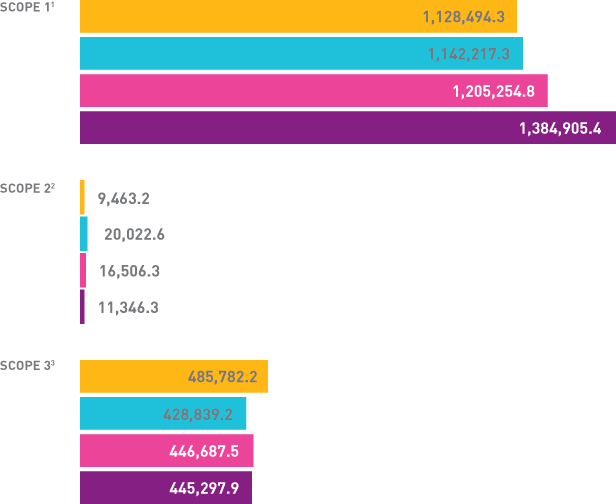Energy that mobilizes
Changing the world
Environmental preservation
Water and energy
|G4-DMA Water, G4-DMA Energy|The rational use of water resources in agro-industrial activities is an aspect to which we have devoted attention since our founding. In the last six years, we have already allocated BRL 50 million to initiatives toward reducing consumption.
As a result of the knowledge acquired, the ReduSa program (REDução do USo da Água) (Reducing Water Use) a pioneering initiative in the sugar and energy sector, has been in place for two crop years, aimed toward reducing water consumption and generation of effluents.
ReduSa operates on two fronts. In the first, the focus is to reduce water withdrawal per ton of sugarcane crushed - one of the sugarcane industry’s main challenges, which normally consumes one cubic meter of water per ton of processed sugarcane. The second front is to decrease the use of cold water in the boilers by reusing the hot water.
As a result, we avoided withdrawing over 8 billion liters - a volume equivalent to the annual consumption of a city with a population of 135,000. In addition, in March 2017, the program helped us earn the Water Conservation and Reuse award, granted by the Federation of Industries of the State of São Paulo (FIESP).1
Regarding energy consumption, the largest demand is during the agro-industrial production stage. Even so, about 93% of this demand is renewable and is supplied by burning sugarcane bagasse, making the operation self-sufficient in terms of energy generation, with fossil resources only being used in specific processes.
Distribution activities still use mostly fossil fuels. We seek to minimize the impacts of this consumption with investments in diversifying modes of transport.
Click here for more information on the water and energy consumption of our operations. |G4-EN3, G4-EN4, G4-EN5, G4-EN8|
Air emissions
|G4-DMA Emissions, G4-DMA Public Policies|Aware of the sugarcane industry’s potential to contribute to reducing greenhouse gas (GHG)2, emissions, we maintain dialogues with industry entities and the government on policies that encourage the use of renewable energies.
In 2016/2017, this aspect returned to the government agenda and provided technical support to create the Renovabio program, a program launched by the Federal Government to encourage the expansion and production of biofuels in Brazil. This is an opportunity for recognition and promotion of ethanol as a sustainable fuel for the Brazilian energy matrix.
Annually, we quantify the emissions of our activities according to the guidelines of The Greenhouse Gas Protocol - the main international benchmark for quantifying corporate emissions – as well as its domestic version, the Brazilian GHG Protocol Program.
For the sixth consecutive year, we have disclosed our inventory, and we are committed to continually improving it. We submit the information for external assurance in order to better control performance.
Since 2016, we have obtained part of the information through automated integration between our software and the original systems where data is available. This reduces the likelihood of errors from manually managing information and the effort required to collect the data and calculate emissions.
2According to the Sugarcane Industry Union (UNICA), the sector can contribute to mitigating 1,239 million tons of carbon dioxide equivalent (CO2eq) (2030), in a constantly expanding scenario.

